This Month's Featured Artist:
Walter Sickert

Walter Richard Sickert (May 30th, 1860 in Munich, Germany– January 22, 1942 in Bath,England) was an English impressionist patiner. Sickert was a cosmopolitan and eccentric who favoured ordinary people and urban scenes as his subjects.
Life and work:
His father Oswald was Danish-German and his mother Eleanor was the illegitimate daughter of astronomer Richard Sheepshanks. The young Walter was sent to King's College school, where he studied until the age of eighteen. Though he was the son and grandson of painters, he at first sought a career as an actor; he appeared in small parts in Sir Henry irving's company, before taking up the study of art as assistant to James McNeill Whistler. He later went to Paris and met Edgar Degas, whose innovative use of pictorial space and emphasis on drawing would have a powerful effect on Sickert's own work.He developed a personal version of Impressionism, favouring somber colouration that is sometimes strikingly unnatural in effect. Following Degas' advice, Sickert painted in the studio, working from drawings and memory as an escape from "the tyranny of nature". Sickert's earliest major works were portrayals of scenes in London music halls, often depicted from complex and ambiguous points of view, so that the spatial relationship between the audience, performer and orchestra becomes confused, as figures gesture into space and others are reflected in mirrors. The isolated rhetorical gestures of singers and actors seem to reach out to no-one in particular, and audience members are portrayed stretching and peering to see things that lie beyond the visible space. This theme of confused or failed communication between people appears frequently in his art.
By emphasising the patterns of wallpaper and architectural decorations, Sickert created abstract decorative arabesques and flattened the three-dimensional space. His music hall pictures, like Degas' paintings of dancers and café-concert entertainers, connect the artificiality of art itself to the conventions of theatrical performance and painted backdrops. Many of these works were exhibited at the New English art club, a group of French-influenced realist artists with which Sickert was associated. At this period Sickert spent much of his time in France, especially in Dieppe where his mistress, and possibly his illegitimate son, lived.
Just before World War 1, he championed the avant-garde artists Lucien pissaro, Jacob Epstein, Augustus John and Wyndham lewis. At the same time he founded, with other artists, the Camden Town Group of British painters, named from the district of London in which he lived. This group had been meeting informally since 1905, but was officially established in 1911. It was influenced by Post-Impressionism and Expressionism, but concentrated on scenes of often drab suburban life; Sickert himself said he preferred the kitchen to the drawing room as a scene for paintings. Sickert regularly portrayed figures placed ambiguously on the borderland between respectability and poverty. From 1908-1912 and again from 1915-1918 Sickert was an influential teacher at Westminster school of art.
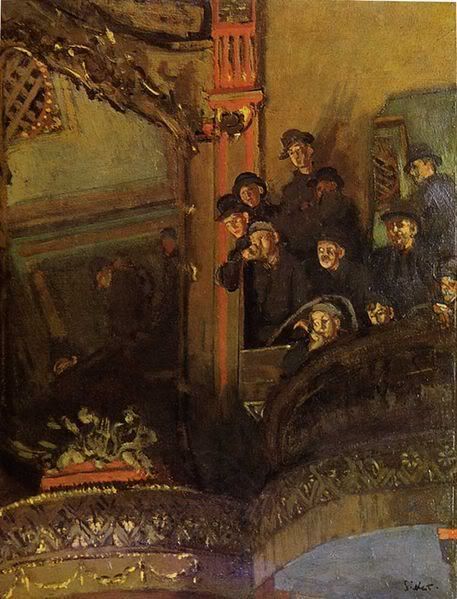
The Old Bedford Music Hall, circa 1885
In 1907 Sickert became interested in the "Camden town murder", the killing of a local prostitute. He painted several versions of a scene in which a heavy-set man sits in a despairing pose by a bed, while a plump naked woman lies on it. Sometimes he exhibited it with the title What shall we do for the rent? (implying that the man is sitting up worrying about debt while his wife sleeps), sometimes as The Camden Town murder (implying that the man has just killed the woman beside him). This play on multiple interpretations of the same scene was a development of the Victorian genre of the . These and other works were painted in heavy impasto and narrow tonal range. Many other obese nudes were painted at this time, in which the fleshiness of the figures is connected to the thickness of the paint, devices that were later adapted by Lucian Freud.
Walter Sickert, The Camden Town Murder, 1908
Sickert's interest in Victorian narrative genres also influenced his best known work Ennui, in which a couple in a dingy interior gaze abstractedly into empty space, as though they can no longer communicate with each other. In his later work Sickert adapted illustrations by Victorian artists such as Georgie Bowers and John Gilbert, taking the scenes out of context and painting them in poster-like colours so that the narrative and spatial intelligibility partly dissolved. He called these paintings his "Echoes". Sickert also executed a number of works in the 1930s based on news photographs, squared up for enlargement, with their pencil grids plainly visible in the finished paintings. Seen by many of his contemporaries as evidence of the artist's decline, these works are also the artist's most forward-looking, seeming to prefigure the practices of Chuck close and Gerhard Richard.
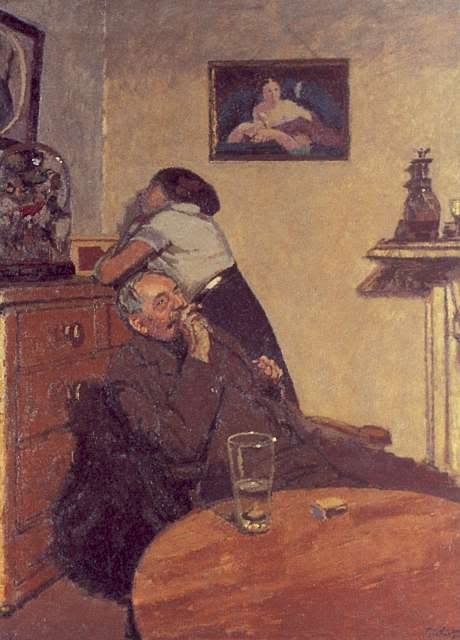
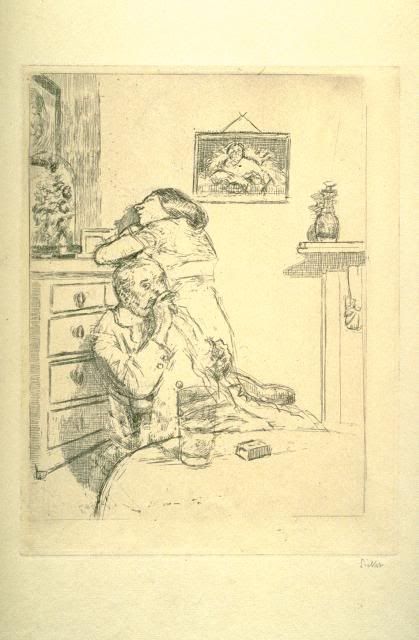
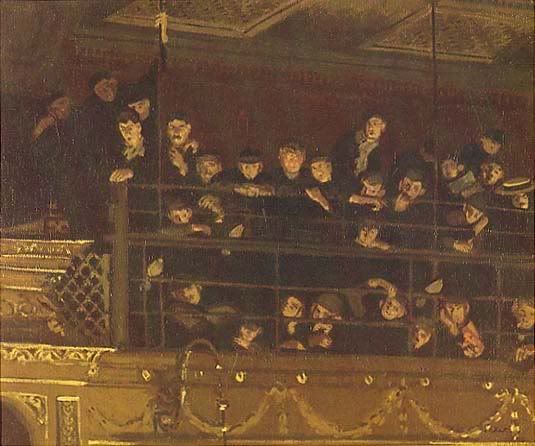


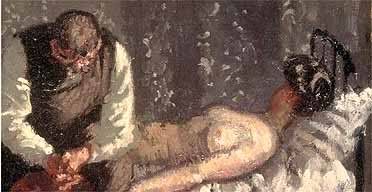
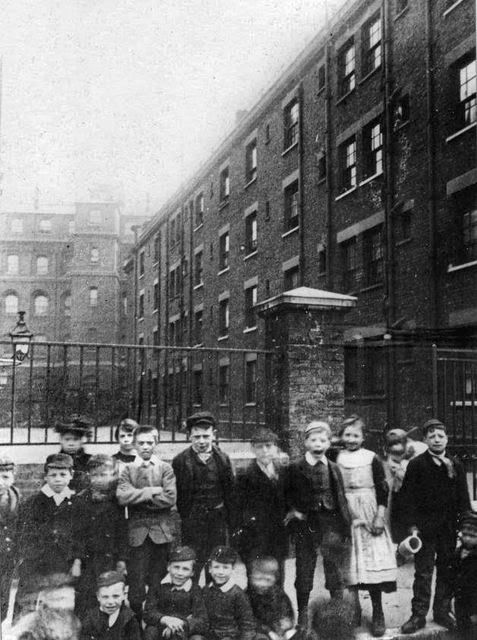
No comments:
Post a Comment